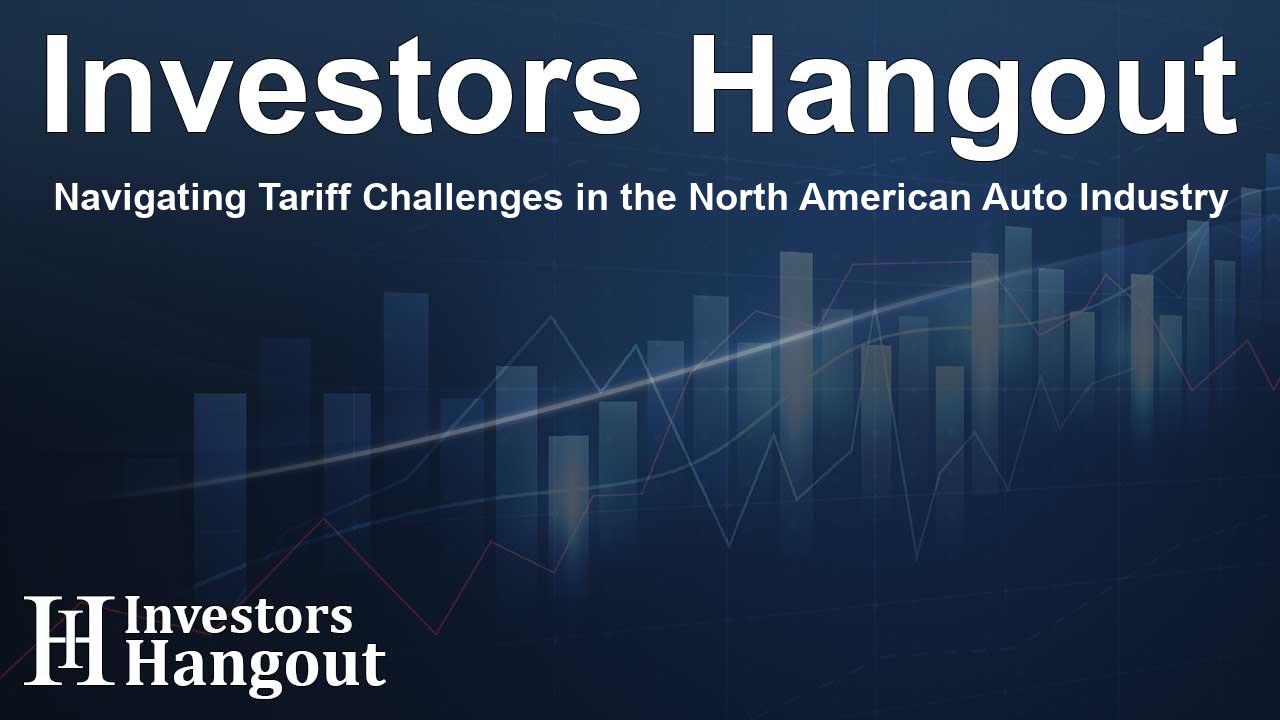Navigating Tariff Challenges in the North American Auto Industry

Understanding the Current Landscape of Automotive Tariffs
The North American automotive industry faces a complex environment with escalating challenges, particularly due to looming tariffs. These tariffs not only affect manufacturers but also ripple through the entire supply chain, impacting everything from production costs to consumer prices. The insights from S&P Global Mobility shed light on the multifaceted issues that automakers are navigating as they strive to maintain stability in an uncertain market.
The Impact of Tariffs on Manufacturers
Manufacturers in the automotive space are carefully considering how tariffs will reshape their operational models. High tariffs can lead to increased costs of imported parts, forcing companies to reevaluate sourcing strategies. Many industry players are exploring options to localize production or find alternatives that will help mitigate the financial burden these tariffs introduce. The quest for cost-efficiency remains paramount, especially as competition intensifies.
Shifts in Supplier Relationships
The need to manage costs has prompted manufacturers to reassess relationships with their suppliers. Some are looking to strengthen local partnerships to diminish reliance on international sources that are vulnerable to tariff increases. This shift not only supports the local economy but also increases the reliability of supply chains.
Consumer Reactions to Increased Costs
As manufacturers grapple with rising costs due to tariffs, it is inevitable that these expenses are passed down to consumers. The hefty price tags on vehicles may alter purchasing behaviors, especially among cost-sensitive buyers. Understanding this dynamic is crucial for automotive companies as they strive to maintain market share amidst changing consumer preferences.
The Role of Political Climate
The political climate also plays a significant role in shaping the automotive industry's response to tariffs. Policies and regulations can change rapidly, resulting in uncertainty for businesses. Industry leaders are advocating for clearer trade regulations that will allow for better long-term strategic planning, ensuring they are prepared for any shifting tide.
Future Outlook for the Automotive Industry
Despite the looming challenges, there is a cautious optimism for the future of the automotive industry. Companies are innovating at a remarkable pace, integrating technology and sustainability practices to create vehicles that appeal to a modern consumer base. As they navigate through tariffs, manufacturers will likely focus on foraying into electric and autonomous vehicle production, areas poised for growth and less susceptible to traditional tariff impacts.
Sustaining Growth amid Challenges
The commitment to resilience is a driving force within the automotive sector. In light of tariffs, companies are not only reacting but proactively evolving. Strategies such as investing in research and development, enhancing operational efficiency, and focusing on consumer engagement are vital to sustaining their growth amidst these challenges.
Conclusion: A Resilient Industry
The North American automotive industry is no stranger to adversity. As looming tariffs pose unprecedented challenges, it's essential for manufacturers to adapt and innovate. The insights from S&P Global Mobility indicate that while the road ahead may be fraught with hurdles, the industry's ability to pivot and embrace change will play a crucial role in its success. The determined spirit of automakers, combined with strategic planning, is key to thriving in a landscape shaped by tariffs.
Frequently Asked Questions
What are the primary challenges faced by the automotive industry?
The industry faces challenges from impending tariffs, rising production costs, and shifting consumer purchasing behaviors that influence market dynamics.
How do tariffs impact vehicle pricing?
Tariffs can increase the cost of imported components, leading manufacturers to raise vehicle prices to cover these additional expenses.
What strategies are manufacturers using to cope with tariffs?
Manufacturers are exploring localization of production, strengthening supplier relationships, and investing in innovation to mitigate the impact of tariffs.
How does the political climate affect the auto industry?
The political environment can create uncertainties in trade regulations, impacting companies' long-term strategic planning in the automotive sector.
What is the future outlook for the automotive industry?
While tariffs present challenges, the industry remains optimistic, focusing on innovation and sustainability trends, particularly in electric and autonomous vehicle markets.
About The Author
Contact Dylan Bailey privately here. Or send an email with ATTN: Dylan Bailey as the subject to contact@investorshangout.com.
About Investors Hangout
Investors Hangout is a leading online stock forum for financial discussion and learning, offering a wide range of free tools and resources. It draws in traders of all levels, who exchange market knowledge, investigate trading tactics, and keep an eye on industry developments in real time. Featuring financial articles, stock message boards, quotes, charts, company profiles, and live news updates. Through cooperative learning and a wealth of informational resources, it helps users from novices creating their first portfolios to experts honing their techniques. Join Investors Hangout today: https://investorshangout.com/
The content of this article is based on factual, publicly available information and does not represent legal, financial, or investment advice. Investors Hangout does not offer financial advice, and the author is not a licensed financial advisor. Consult a qualified advisor before making any financial or investment decisions based on this article. This article should not be considered advice to purchase, sell, or hold any securities or other investments. If any of the material provided here is inaccurate, please contact us for corrections.
